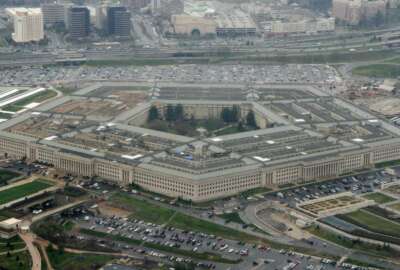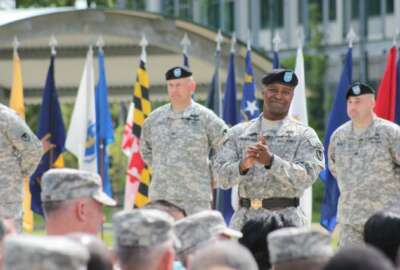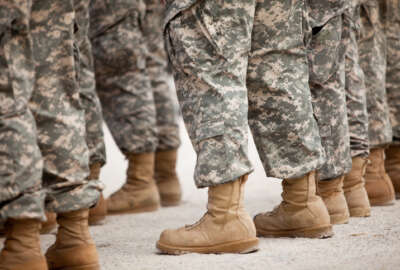
Army’s new tactical network faces first test in ‘crucible of combat’
The Army's new Integrated Tactical Network -- a blend of military communications and commercial capabilities -- went through its first large-scale combat exercise...
(Fort Polk, La.) — After a sustained effort over the past several years to make its battlefield communications more reliable and resilient, the Army’s new Integrated Tactical Network (ITN) is being put through its paces. And while initial reviews from the soldiers using it are quite positive, the system-of-systems still seems to suffer from a problem the Army’s never quite been able to solve: Excessive complexity.
The 82nd Airborne Division’s 1st Brigade Combat Team, the first ever brigade-sized unit to be outfitted with the full set of ITN capabilities started their first major training rotation with the new gear at the Joint Readiness Training Center (JRTC) last month. The 1st Brigade has had the equipment in its inventory for about two months now, but this was the first time it — or any unit — had used it during an exercise of this scale.
The night before speaking with Federal News Network, paratoopers jumped into this vast, wooded range in a training scenario in which they faced a hostile opposing force, portrayed by another Army formation, and had to get quickly established on the ground, including with reliable communications.
They did. And the quality of the connectivity was a night-and-day difference from what his unit had ever used before, said Lt. Col. Andy Harris, the commander of the 1st Battalion of the 504th Infantry Regiment.
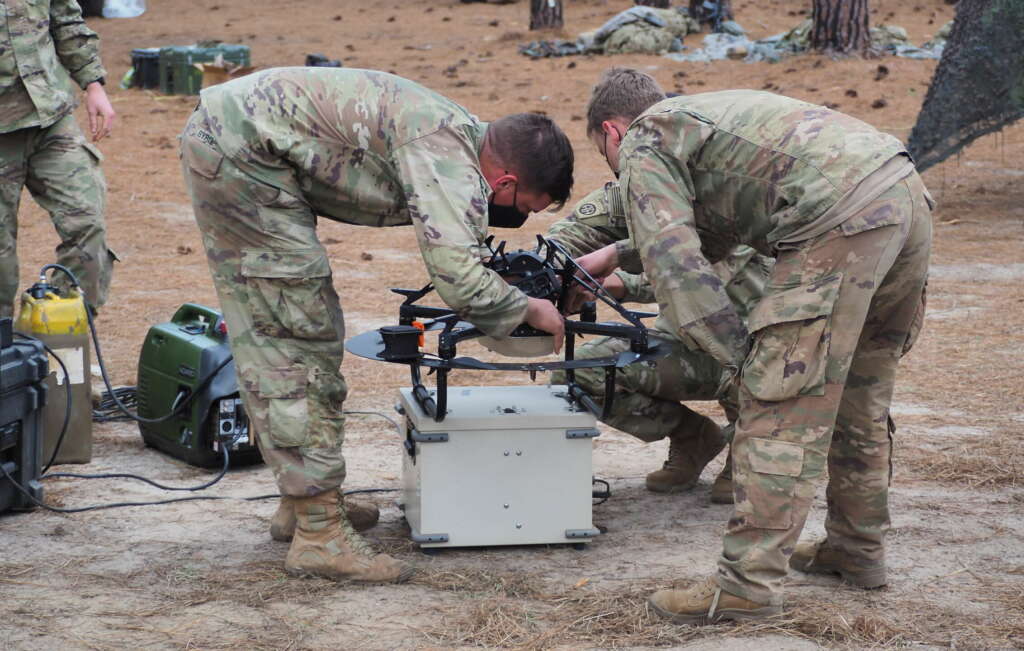
“I mean, it’s 100 times better,” he told a pair of reporters just after his unit completed an after-action review the day following the jump. “For instance, the ability to pull down your EUD and get a visual confirmation of where all of your units are in space and time on the battlefield. Before, you had your map, you think they’re there, you don’t know if they’re there — there may be a ridgeline where you can’t see them. But now you’re pulling real-time data, and you know they’re there.”
The “EUD” (end user device) is just an Army acronym for what’s, in reality, a more-or-less off-the-shelf Samsung Galaxy smartphone with GPS enabled. Each soldier wears one, and via a somewhat complicated series of cables, they can send and receive data, including their own positions, either through cellular networks or specialized military waveforms.
And that’s what the Army means when it calls the new network “integrated.” It’s meant to blend legacy tactical communications capabilities with both new military-specific systems and commercial ones. Indeed, when the first units dropped into JRTC the night before, their initial network connectivity was delivered not by military satellite or terrestrial antennas, but by garden-variety AT&T cell towers.
“Currently, 1st Brigade has the most communications assets of any brigade in the Army. That does bring some complexity, but it also gives us the flexibility to [stand up communications] based off of the airborne timeline,” said Capt. Hannah Scott, a signal officer who commands the brigade’s Charlie Company. “All-in-all, the integration of all this equipment – that’s the purpose of the Integrated Tactical Network. It doesn’t mean that WIN-T is going away, but it does provide more options for our commanders.”
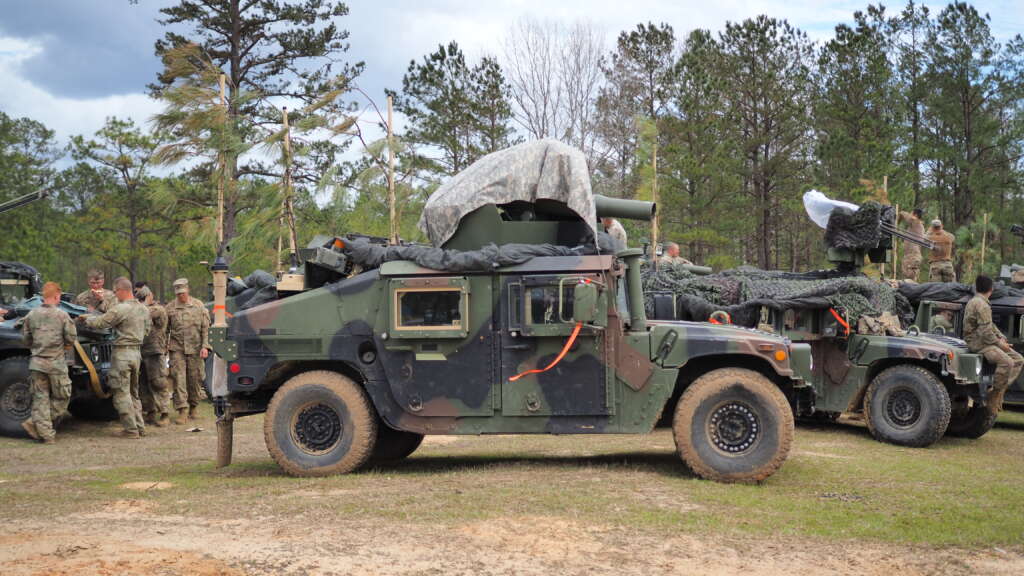
Another one of those new options is the Tactical Scalable Mobile Ad-hoc Network (TSM). It’s designed to form a mesh network the Army calls a communications “bubble” for all the formations that need to communicate with one another once they’re on the ground.
It’s based on a commercial waveform, and the Army is still testing the technology in combat settings. But Harris said his unit’s initial experience has been extremely promising.
“With these variable height antennas, when you pump them up and they get up above the trees, the network that it expands – I mean, you’re talking for 20 kilometers on TSM. You’re not going to do that on traditional FM comms,” he said. “The amount of retransmitters you would have to set up and the terrain that you would have to set it up in would eat more combat power than we had to use to secure those variable height antennas. And when you’re in that [TSM] bubble, the comms are extremely clear.”
Speed is a big plus, too. That mesh network got up and running within about 15 minutes after Capt. Scott’s signal company hit the ground with its equipment. That’s partly because those variable height antennas about aren’t giant masts attached to big vehicles – they’re actually small quadicopters that pack away in a container a little larger than a suitcase, and can get from the ground to above the treeline in seconds.
Video by Jared Serbu/Federal News Network
“The speed is extremely important because commanders need that communication spread in that bubble as fast as possible,” Scott said, adding that it took about 45 minutes to set up the prior generation of FM-based communications.
The Army sees this JRTC rotation as a learning experience for the whole enterprise. Army Test and Evaluation Command is also here, getting its first look at how the ITN network operates in a realistic environment. And the acquisition community is getting its first real soldier feedback on how those new commercial capabilities work on the battlefield.
“As we start to leverage some of the commercial capabilities, one of the things that we’ll foundationally do over time is start to expose those to different threat environments and how we can harden those in some of our focus areas, lowering the probability of [enemy] intercept and detection and geolocation,” said Brig. Gen. Robert Collins, the Program Executive Officer for Command, Control and Communications-Tactical. “Those are things that traditional commercial technologies aren’t naturally exposed to. So as part of our capability set process, whether it’s a big [company] or a small one, we expose them to that threat environment. And as we get ready for the next set, things that are ready from a affordability perspective, from a concept of operations perspective, from a technology maturity level, we can fold that in and we continue over time.”
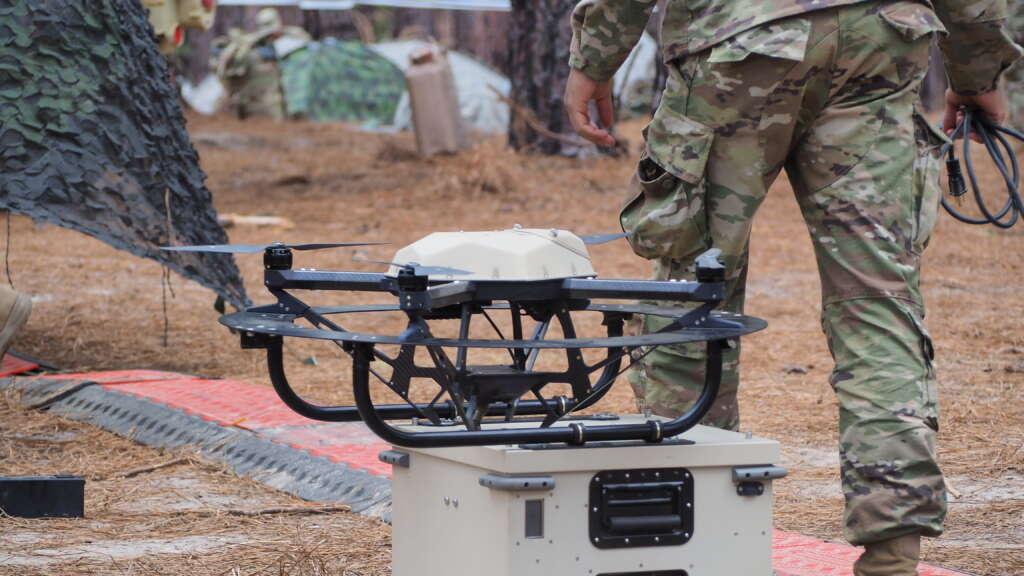
When the Army first set about revamping its battlefield networks into the iterative capability sets it’s now beginning to field, one of the main goals was to make the tactical network less complex; easier for soldiers to use.
And on that score, this JRTC rotation showed the Army still has a lot of work to do.
For example, those Samsung smartphones: every packet of data they send and receive is dependent on a somewhat fragile micro-USB connector – the same kind we’ve all broken on our own phones – and most of us don’t jump out of airplanes for a living. And that connector is just one piece of a complicated jumble of cables and connectors that tie the soldier-worn portions of ITN together.
Depending on a particular soldier’s position in a unit, Harris said all those communications devices can be a lot to manage in a combat situation.
“With the new equipment comes a lot of cabling. There’s a lot of weight to it,” he said. “It’s not really ideal right now as far as wearing it on your body armor and your kit — there are tons of cables all over the place. And at the team leader level, I don’t necessarily want them looking at their EUDs, I want them to be able to reach out and touch people and tell them, ‘You go there, you go there.’ And what I’ve seen is they want to look down at that EUD — they want to focus down when they need to have their head up, and be focusing on the terrain and the enemy and the situation that they’re in.”
Another area of complexity: In order for all of those radios to work together, they have to be pre-programmed with the specific communications plan the unit plans to use ahead of time. Harris said it’s a very labor-intensive process for the signal corps. And if they miss a single step, the entire mission plan could fail.
“If you’re not on the same mission plan, you will not be able to talk. So we could hit the drop zone and realize that one company and another company are not on my mission plan, and now I cannot talk to them whatsoever until we load that mission plan, which could take a substantial amount of time,” he said. “And that assuming we jumped in the right equipment [to load the mission plan]. On an airborne assault, we’re probably not going to, because then you’re taking something else out that you’re going to need to fight with when you hit the ground.”
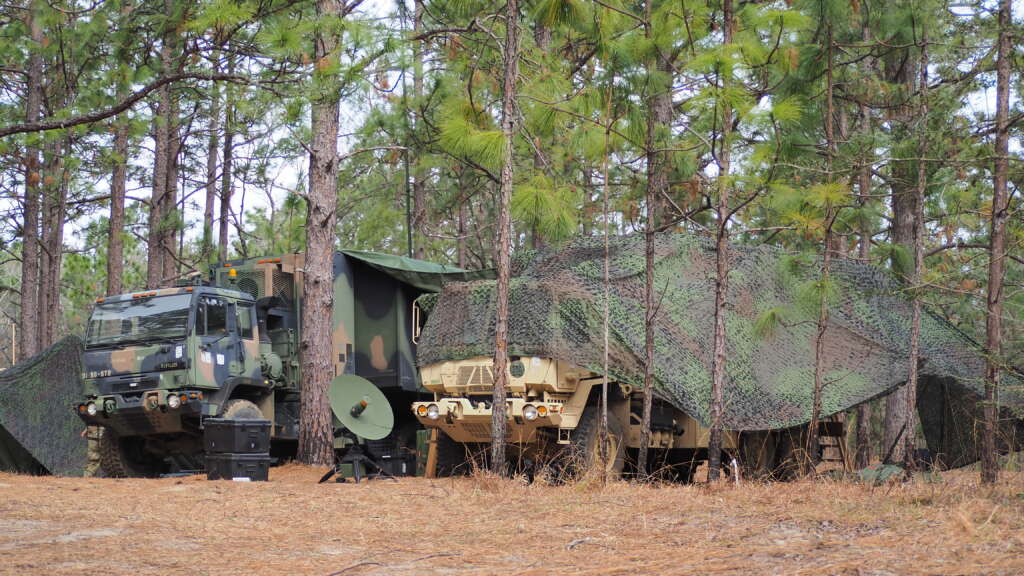
But the Army’s capability developers say they fully intend to solve problems like that, and want to learn about those kinds of problems as early as possible. That’s part of the idea behind fielding new equipment in capability sets in the first place: New gear gets delivered in two year cycles; not every unit will get the same stuff at the same time. Officials want to start delivering both hardware and software via a continuous dev-ops model.
Maj. Gen. Peter Gallagher, the director of the Army’s Network Cross-functional Team, said that’s why critiques from soldiers at this stage of the process are vital to ongoing development.
“This is really a combination exercise. This is kind of in the breach, in the in the crucible of combat, force on force, and it will help us as we look at preliminary design for Capability Set 23,” he said. “The feedback from the unit has been absolutely critical. It’s helping Gen. Collins give feedback back to the vendors saying, ‘Ok, this works, this doesn’t, here’s what we’re getting from those units, here’s how we can leverage this in the fight. And as an affordability drill, we make adjustments. What type of radios do we really need at each echelon? What’s the minimum essential kit? We thought we had it about right, but after this rotation, we’re going to relook that because I think this feedback is going to be critical.”
Copyright © 2025 Federal News Network. All rights reserved. This website is not intended for users located within the European Economic Area.
Jared Serbu is deputy editor of Federal News Network and reports on the Defense Department’s contracting, legislative, workforce and IT issues.
Follow @jserbuWFED




